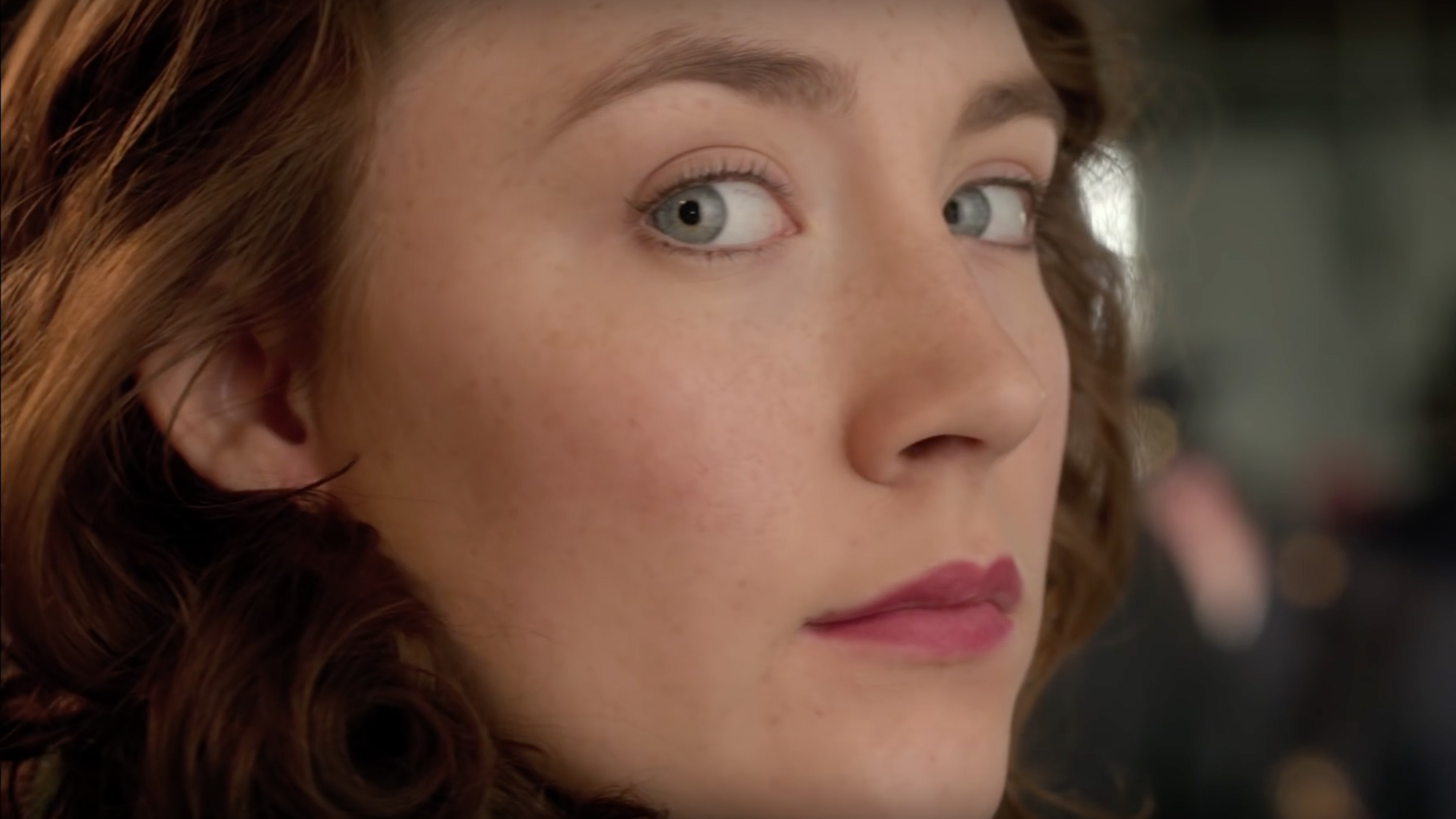Brooklyn is a metaphor. That’s as true for America today as it is for Colm Tóibín’s book and John Crowley’s phenomenal new film adaptation (which was scripted by Nick Hornby). It’s a place that wears its metaphorical aspects much more ostentatiously now than perhaps it did in the past, but it has long been a destination for immigrants of all kinds. And it seems important that Tóibín set the New World of his story in a place of such immense contemporary fascination. As Manhattan was to nineteenth-century Europeans, as the American west was to nineteenth-century Americans, so Brooklyn is to Brooklyn’s main character, Eilis Lacey. It’s a place that seems to be both a destiny and a potential death sentence. It’s as full of promise as it is of terrors, and its main characteristic seems to be blankness. It is unknown.
In Tóibín’s equally compelling novel, Brooklyn’s looming presence communicates itself largely through an unstated sense of fear and excitement. Nebulous emotional states are not the stuff of compelling cinema, as a general rule, but both Crowley and Tóibín rely on a similar strategy in order to make their immigration stories land. They rely on the eyes of their hero, Eilis Lacey (Saoirse Ronan)—a smart, well-mannered, and latently ambitious Irish woman who has been sponsored in her journey to America by a sympathetic Irish-American priest. In the novel, Eilis’s dawning sense of her own abilities, desires, and, for lack of a better word, life, offer the tension of a thriller to what is more properly a realist work of low-stakes historical fiction; in the film, this immensely fraught inner life is communicated largely through silence and gesture.
That’s not to say that Eilis does not lead an eventful outer life as well. We see her in her hometown of Enniscorthy, working at the local store and negotiating the fallout of her decision to leave—which appears to be more properly the family’s rather than her own—with her beloved sister and mother. We join her on her sea voyage, learn how every new situation and milieu requires a new strategy (she must make herself up for immigration inspection; show a brave face to her store supervisor; remain the polite Irish girl for her landlord, Ma Kehoe, and so on). She finds success at the department store and in nighttime accounting classes; she falls in love with a quietly charismatic Italian-American suitor.
Daily life is the main struggle of Eilis’s first days and months in America, and that is where most of the movie is focused; when the story does turn to romance in the second half, when Eilis is forced to return to Ireland and sees an alternative version of her existence there, the decision she makes is at once romantic and personal. It is a question of who she wants and what she wants herself to be. The choice takes on a moral tone and is made more urgent by that fact. And when she makes her decision, she makes it alone.
Once Eilis arrives in America, everything she tells her family is just a story, even when it’s the truth.
That sense of isolation is an important element of this story, which truly is one of self-discovery. Young adult novels thrive on this kind of material, and Pixar has built an empire on the model, but it’s not just children who need to work to find themselves. Eilis is Irish and she is American, and she is certain that she cannot be both at once any more than she can live in both countries at the same time. (At one point she describes her experience of grief as having “a soul halfway across the sea.”)
Letters cross the seas, but those letters are immediately neutered by Eilis’s almost instinctive honesty. Her sister and mother share this trait: even when they dissemble, they tell the truth. And thus all of the obvious love in their letters can’t overcome the fact that they no longer share the same home or live the same lives. The idea that Brooklyn is “just like Ireland” is a common tool that people use here, and it is similar to the idea that a given food tastes “just like chicken.” Another way of saying the same thing is “there’s nothing else like it.” Once Eilis arrives in America, everything she tells her family is just a story, even when it’s the truth.
Eilis’s words may not suffice for truth, but it’s hard not to believe in Saoirse Ronan’s performance. She looks out from the deck of her departing ship and in her eyes we see desolation. Later, she sees her store supervisor and her sponsoring priest, Father Flood, crossing toward her, and we see grief. And when she moves from watching and waiting to seeking and deciding, we feel her triumph. The film uses slow motion frequently, often when depicting Eilis but also when showing us what she sees. The effect of these shots is to raise the prosaic to an almost epic scale, and although Eilis herself may not be a character of world-historical importance, the gesture does not feel out of place.
Brooklyn is set in the past and makes very little effort to connect to contemporary issues and concerns—let alone to contemporary Brooklyn—but in slowing the past down Crowley also makes it overwhelmingly present. The movie is relentlessly captivating. By the end, Eilis’s journey may be over, but there is a sense that she will keep going. And for such an ostensibly “slow” movie, that’s an awful lot of inertia. Eilis’ “soul,” we feel, is a vital one: it will never stop looking for shore. FL









